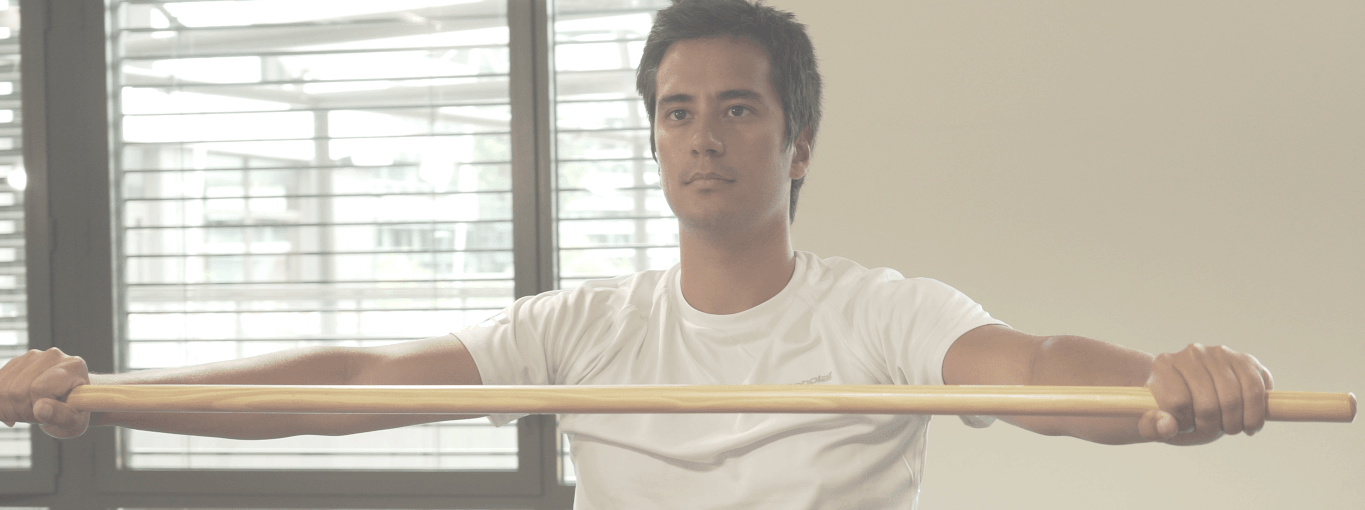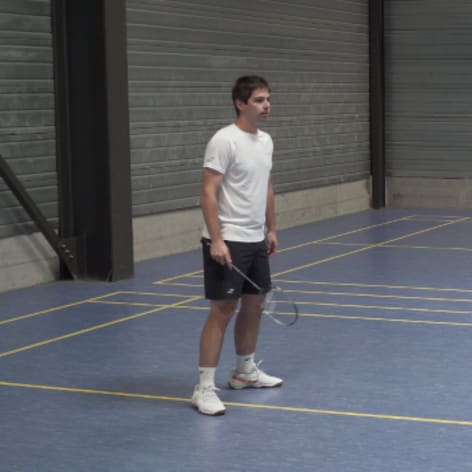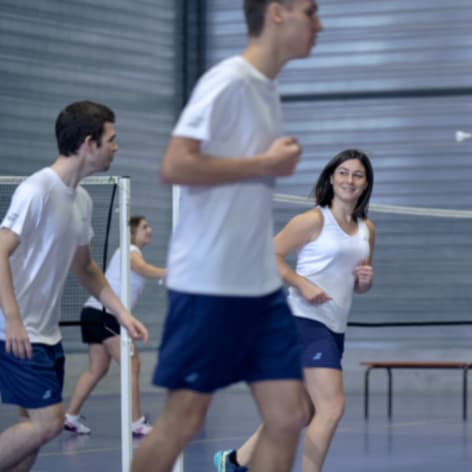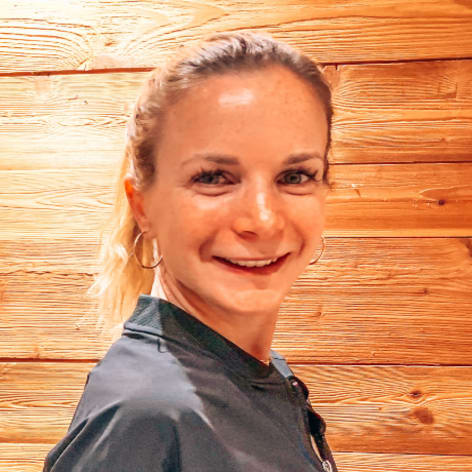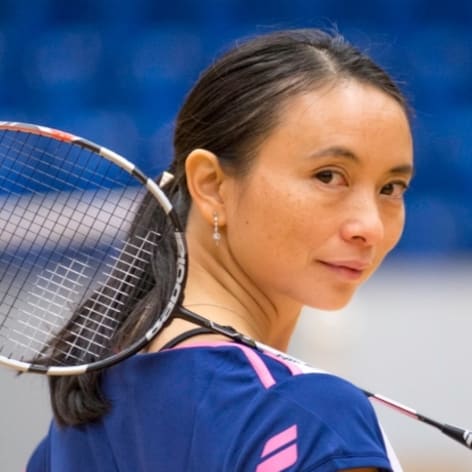In this specific article, Hongyan and Julie explain how important it is to work on your stretching to improve your flexibility and joint mobility, which will allow you to:
- prevent injury
- train more, with better quality
- be able to hit in more extreme positions
This can be achieved by different types of exercises, some that you can do just before playing (practice or competition) and some that you can work on at a different time, in a different way, to work on long-term flexibility.
Why is it so important to be flexible in badminton?
Flexibilty and joint mobility are crucial to get the right movements for badminton strokes, whether you hit from the rear of the court, use defensive shots laterally or lunge towards the net. They are also important for jumps and repositioning yourself on court as well. Being more flexible and achieving greater mobility in your joints – knees, elbows, ankles, wrist – will help you in your overall movement coordination and game precision.
Being more flexible means that the quality of your muscles and joints will allow you to cope with higher training intensity and muscle fatigue. The elasticity of your muscles will also allow them to contract more efficiently – like a rubber band: you can then move faster and hit harder. And, last but not least, it helps prevent injuries.
Stretching is crucial. Not only before your matches or practice sessions, but also after playing, stretching increases the durability of your joints and ligaments.
How to stretch efficiently?
First of all, remember that you will not stretch the same way every time – it will depend on the timing you do your stretching. Before a training session or competition, the stretching exercises will be done in a more dynamic or ACTIVE way, with more movements, in short series but without pushing it too hard or holding stretching positions too long.
Outside these particular moments, stretching is just as important. You may do one stretching session per week, taking more time, working in depth with a more PASSIVE approach. You should always maintain a special focus on breathing: exhale all the way, each time you hold a position.
In all cases, good flexibility and joint mobility take time and regularity.
Exercises:
Specific to badminton:
For the following exercises, active and dynamic can be done to warm up before a practice session or a match. Passive/static is better to be done on its own, in depth.
1. Shoulder stretch:
Useful for all shots, especially the-round-the-head clear
Active/dynamic (before practice or competition):
Stretch with a racquet or a stick, rotate sideways from back to front, 3 sets of 5 times.
To stretch your shoulder muscles, stand with your back in a straight line, your hands on a wall for 30 seconds, twice.
To work on the mobility of that shoulder joint, take two 50 ml bottles with your arms stretched forward, then rotate your arms and bring back the bottles with a slow movement towards your ears.
Passive/static (once a week):
Stand with your back in a straight line, your hands on a wall. Three time for 20 sec (depending on your level, you can do 3 time for 30 sec up to 1 min).
2. Achilles tendon stretch
Known as the “Stanish Protocol”, this exercise strengthens the triceps and allows you to give good elasticity and strength to your Achilles tendon. Very good for badminton players, both to prevent injuries and to gain strength for jumps.
Active/dynamic: step on a ladder or stairs with your feet halfway out and go up and down 3 sets of 6 times for each foot.
Passive/Static:
Three series of 20 sec (depending on your level, you can do 3 series of 30 sec up to three series of 1 min)
Exhale fully and hold.
3. Adductors stretch:
Active/Dynamic: Sit with your legs like a butterfly, foot against foot. Push down on your knees for 6 seconds, then hold for 6 seconds for a total of 1 minute
Passive/static (once a week): Three series of 20 sec (depending on your level, you can do 3 series of 30 sec up to three series of 1 min).
Don’t forget to exhale fully while doing this exercise.
4. The lunge:
one of badminton’s most important moves.
Active/Dynamic: One leg forward at 90 degrees, your buttocks down, back straight. Knee is aligned with the foot. At no point should your knee go further than your feet vertically. Stretch for 30 seconds, switching leg each time, 3 times.
Passive/static: Three series of 20 sec per side (depending on your level, you can do 3 series of 30 sec up to three series of 1 min).
General exercises:
these apply to any sport, or anyone wanting to be more flexible!
For all 6 exercises, keep your back as straight as possible.
1. Quad stretch
Stand with your feet together. Bend your left knee and use your left hand to pull your left foot towards your buttocks. Keep your knees together.
Hold for 10 seconds / 20 sec / 45 sec to 1 min.
2. Psoas stretch
Stand with your feet together. Lift one leg up, reach its knee with both hands. Bring it up to hip level and hold it for three sets of 10 sec / 20 sec / 45 sec to 1 min depending on your level.
3. Gluteal stretch
Low lunge with your body weight on the front leg. Find your balance first (you can put your hands on your knee), then both arms overhead. Hold for three sets of 10 sec / 20 sec / 45 sec to 1 min depending on your level.
4. Back stretch
Stand straight and gently bend forwards to reach your toes with your hands. Hold for three sets of 10 sec / 20 sec / 45 sec to 1 min depending on your flexibility level.
5. Hamstrings stretch
Stand with your feet around 1 metre apart and gently bend forwards to reach your ankles with your hands. Hold for three sets of 10 sec / 20 sec / 45 sec to 1 min depending on your flexibility level.
6. Adductors stretch
Move your feet apart as far as you can sideways and place your hands on the ground on front of you. Hold for three sets of 10 sec / 20 sec / 45 sec to 1 min depending on your flexibility level.
Julie’s tip: “Not right away after a huge effort”
After a match or hard practice session, cool down first and go for 10 minutes running at very low pace. Then, and only then, should you start on your stretching, and even then it should be done gently.
Hongyan’s tip: “Start young”
It’s good to start work on flexibility as soon as possible – when you start playing. Stretching should be a reflex before any session and should be worked upon very regularly. But don’t worry, if you haven’t started at a young age, it is possible to gain flexibility at any age.




